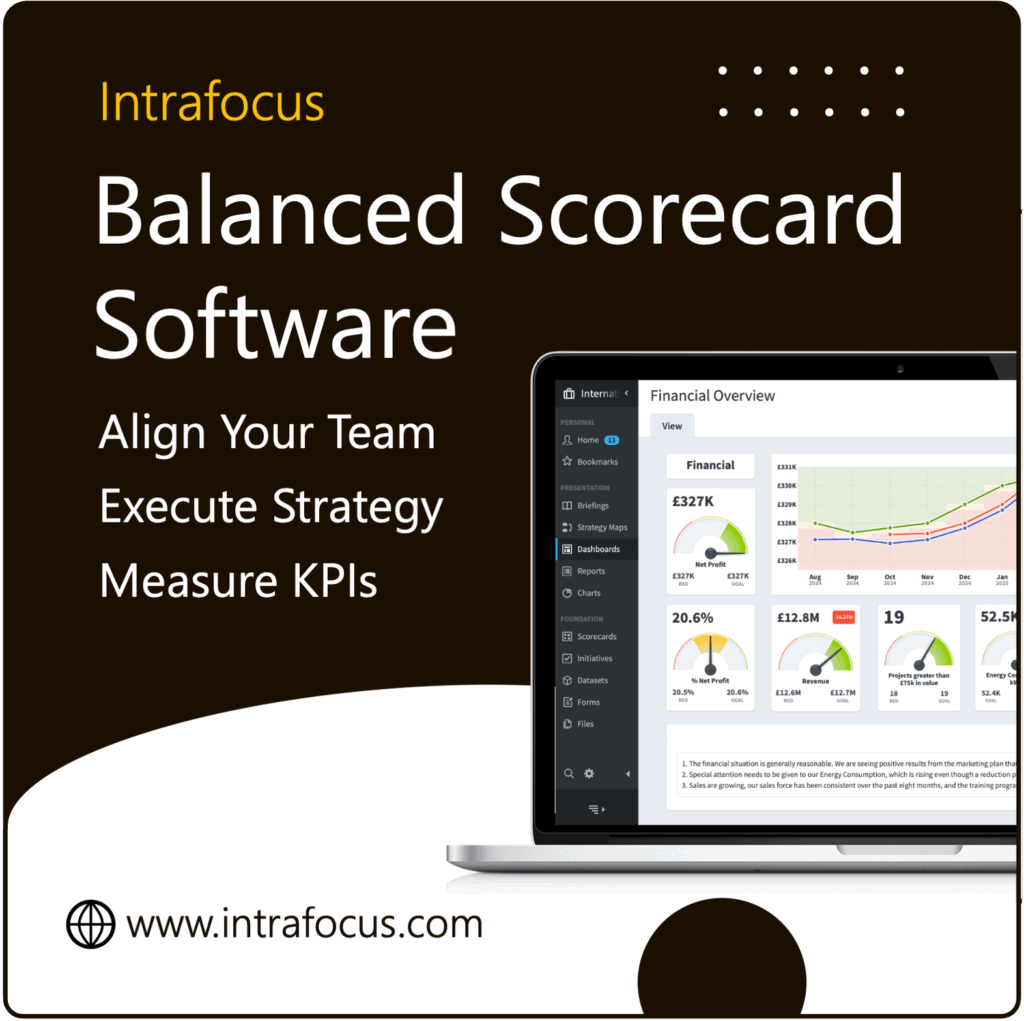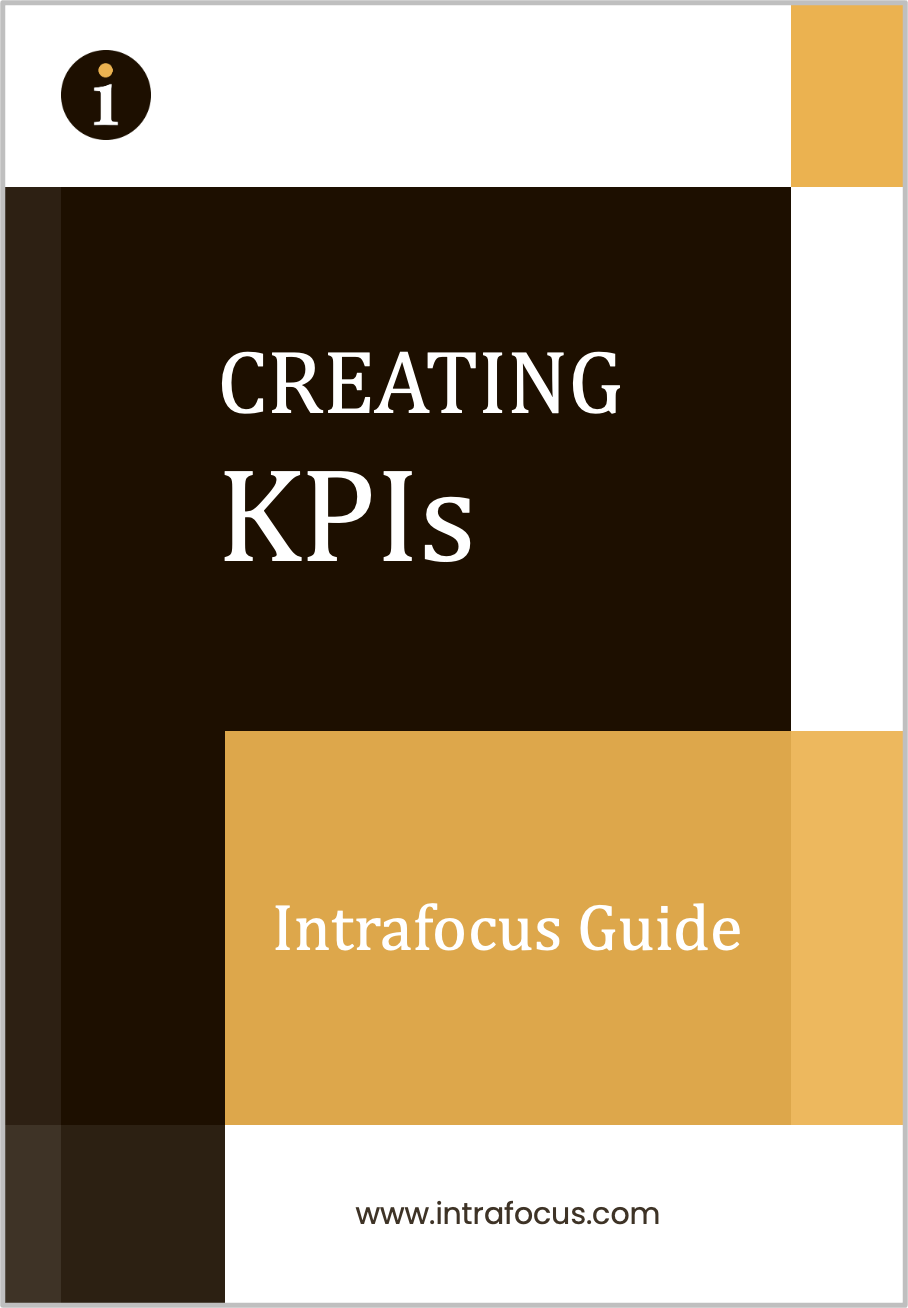Where Strategic Planning Goes Wrong! We’ve all been there. A big strategy reveal. Bold goals. Sleek slides. Maybe even a buzzword or two. Everyone claps… and then nothing happens.
The document gathers dust, the team forgets what it said, and the next 12 months look suspiciously like the last 12. Strategic planning is supposed to provide clarity, alignment, and focus. But too often, it delivers confusion, frustration, and very little else.
So, what goes wrong?
In this article, we’ll explore five common mistakes organisations make when developing a strategic plan — and how to avoid them. If you’ve ever felt your strategy isn’t delivering what it promised, you’re not alone. But with the right approach, that can change. And if you are unsure what strategic planning is, read What is Strategic Planning? first.
Resource: Balanced Scorecard software for UK & EMEA — Intrafocus is the international reseller.
1. Planning in Isolation
One of the most frequent missteps is turning strategic planning into an executive-only exercise.
Leadership heads off for a two-day off-site. They re-emerge with a fresh vision, new goals, and a grand presentation. But there’s a problem: no one else was invited to the party.
The result? Teams don’t understand the strategy, weren’t consulted on priorities, and feel no sense of ownership. It’s like being handed a roadmap without being told where you’re going or why.
The fix:
Make it inclusive. Strategic planning works best when it’s informed by those who are closest to the day-to-day operations. Involving department heads, team leaders, and even frontline staff helps ground the plan in reality and builds the buy-in needed to make it work.
2. Confusing Activity with Strategy
Another classic mistake is assuming that being busy means being strategic.
You see this when a plan becomes a long list of tasks, initiatives, and vague aspirations. But strategy isn’t about doing more — it’s about doing what matters.
When everything is a priority, nothing is. Teams spread themselves too thin, leaders lose clarity, and progress stalls.
The fix:
Strategy is about focus. It requires making hard choices and committing to them. At Intrafocus, we use a Seven-Step Strategic Planning Process to help organisations identify what’s truly important, define measurable goals, and align efforts across the business. It brings discipline to the process — and clarity to the outcome.
3. Ignoring Measurement
You can’t manage what you don’t measure.
One of the biggest gaps in failed strategic plans is the lack of meaningful KPIs. Organisations talk about “delighting customers” or “driving innovation,” but fail to define what success actually looks like — or how to track it.
Sometimes, KPIs are tacked on as an afterthought, chosen because they’re easy to measure, not because they reflect strategic progress.
The fix:
Start with measurement in mind. Use frameworks like the Balanced Scorecard to define objectives and track performance across four key areas: Financial, Customer, Internal Processes, and Organisational Capacity. These perspectives help you measure not just outcomes, but the drivers of success — giving you a balanced view of performance.
4. Leaving Strategy in a Binder
Even the best strategy won’t work if no one remembers it exists.
A common failure is what we call the “strategy shelf.” That’s where plans go to die — in binders, forgotten folders, or the back of a SharePoint site no one visits.
Teams go back to business as usual. The strategy becomes a vague reference point rather than a living document that drives decisions.
The fix:
Make your strategy visible, dynamic, and accessible. Use strategy management tools like Spider Impact to centralise your plan, automate performance tracking, and bring your goals to life. When people can see the strategy and how their work contributes to it, accountability improves — and results follow.
5. No System for Follow-Through
Many strategic plans fail not because they’re wrong — but because they never get fully implemented.
Once the excitement of the planning phase fades, the real work begins. Without a system in place to keep the strategy front and centre, momentum slips away. Updates get delayed, projects drift off course, and leadership loses visibility.
The fix:
Execution requires structure. That means regular reviews, clear accountability, and tools that make follow-through part of daily operations. With Spider Impact, organisations can automate reporting, monitor progress in real time, and keep everyone aligned — from the boardroom to the frontline.
A great plan needs more than good intentions. It needs a system that turns strategy into consistent action.
Get Strategic Planning Right
When strategic planning goes wrong, it’s frustrating — for leadership and teams alike. But when it’s done right, the difference is transformative.
You gain focus, not overload. Alignment, not confusion. And a living strategy that evolves with your business — rather than one that quietly expires.
At Intrafocus, we help organisations build strategic plans that work. Using our Seven-Step Strategic Planning Process, the Balanced Scorecard, and Spider Impact software, we bring structure, clarity, and visibility to every stage of the journey.
It’s not about reinventing the wheel. It’s about making planning practical, measurable, and useful — every single day.
Where Strategic Planning Goes Wrong
Strategic planning isn’t a one-time exercise or a static report. It’s a powerful discipline that, when done right, aligns teams, drives performance, and creates lasting impact.
Avoid the common pitfalls: don’t plan in isolation, don’t confuse activity with focus, don’t forget to measure, and don’t let your plan vanish after launch. Build a system that supports real execution — and gives your strategy the attention it deserves.
🎯 Ready to improve your strategic planning?



